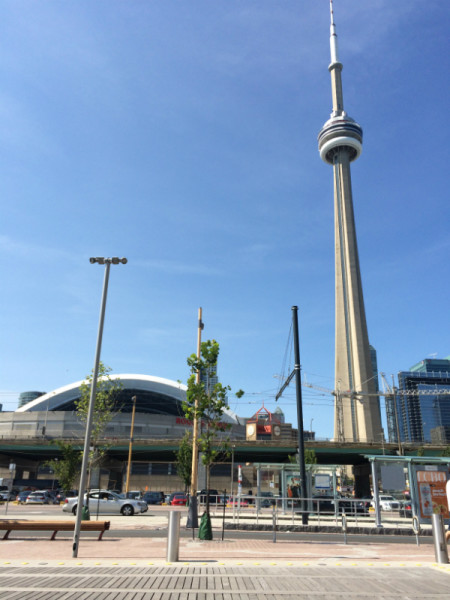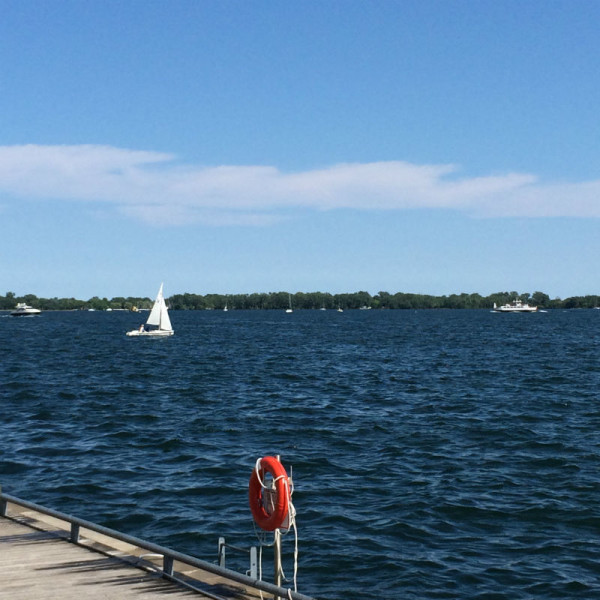Monarchs find a niche in the concrete jungle
This summer WWF will be offering guided walks along a section of Toronto’s downtown waterfront to show you how nature is thriving in the city. One walker shares her encounter with some special walk visitors.
Written by Kathy Nguyen, Intern, Public Mobilization
Just steps from the towers of downtown Toronto’s skyline was a sighting that took me by surprise. In a matter of seconds, not one, not two, but six monarch butterflies danced in front of my eyes.

In recent years, the population of monarch butterflies has rapidly declined. WWF’s 2013-2014 report showed populations of overwintering monarchs in the mountains of Mexico had reached their lowest numbers in 20 years. This decline is a result of the combination of climate change, extensive habitat loss from illegal logging, and a scarcity in the food sources most crucial to its survival.
On the walk, I not only spotted monarchs, but learned about an important food source that grows along Toronto’s waterfront: milkweed. Our guide Heather Crochetiere, a member of WWF-Canada’s freshwater conservation team, told us that herbicide use has been diminishing the availability of milkweed. Then she showed us how these plants are growing in various nooks and crannies along Toronto’s harbourfront, giving sustenance to the caterpillars that transform into butterflies.

WWF Walks gives a closer look at the hidden ecosystems of downtown Toronto with WWF staff as your personal guides. This is a unique opportunity for you to connect with nature, learn about the threats it’s facing, and hear first-hand what WWF-Canada is (and what you can be!) doing about it.
As we walked along the harbourfront, we watched in wonderment as the double-crested cormorant – whose populations were once threatened by the use of DDT – hunted and dove for lunch in Lake Ontario. Lake Ontario has long been considered one of the most polluted of our Great Lakes. But as Heather explained, birds eating fish is a good sign for the lake, as it signifies that the water quality has improved in recent years to support healthy fish populations.

I walked away knowing that seemingly small steps, such as planting milkweed in my garden, can have a direct positive impact. The walk brought to light just how what we do as individuals can lead to large ecosystem changes.
Thank you WWF-Canada! Not since moving to this city last fall have I felt as connected with nature as I did today.
There are only a few days left to walk with us! Find out more about the walks and register now at wwfcastg.wwf.ca/walks.
